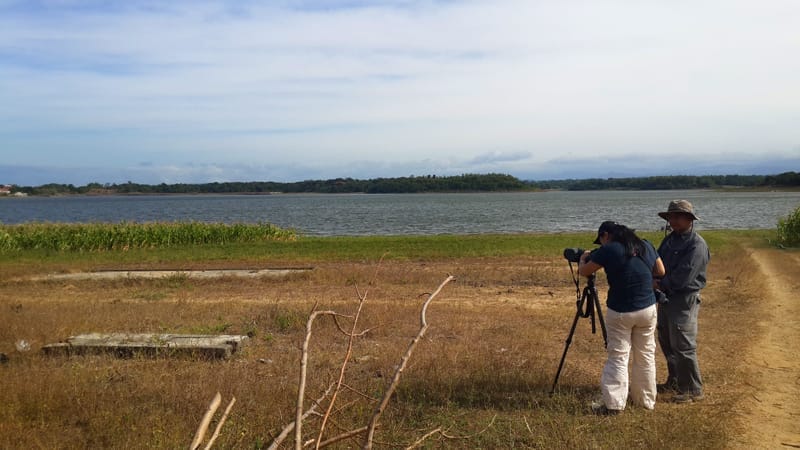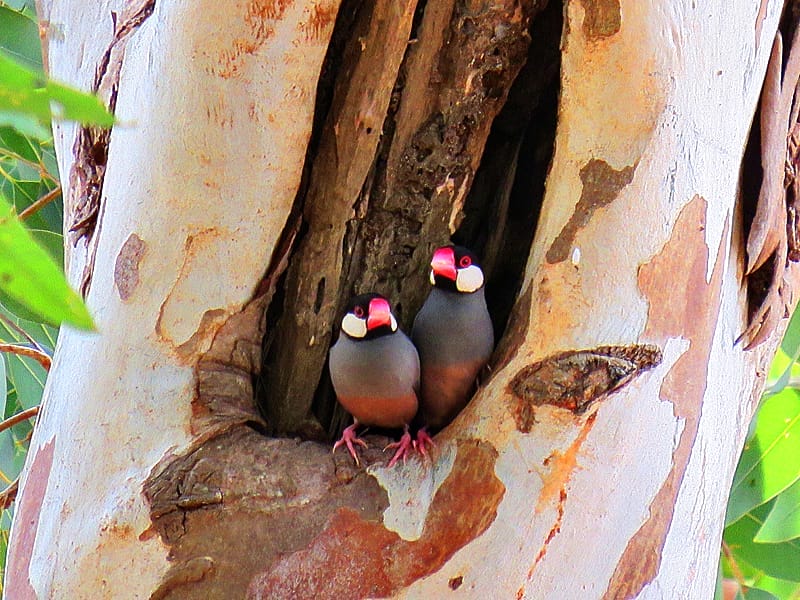By Tin Telesforo
Paoay is an attractive destination not only for tourists but also for waterbirds. In this year’s Asian Waterbird Census (AWC), counters from the Wild Bird Club of the Philippines and DENR recorded 3,500 birds, the highest count for Paoay Lake since it was included in the AWC in 2009.

But for our annual avian visitors escaping the winter cold in the north, the place to go is Paoay Lake. Covering an area of nearly 4 square-kilometers, it is the largest freshwater lake in Ilocos Norte and one of the largest in Luzon.
It is the site of the Great Cormorant Festival celebrated every November, about the time this bird has been sighted there. The lake is also home to a number of resident and endemic waterbird species.

Petrus “Doc Pete” Calope and Richard Ruiz, both longtime members of the Wild Bird of the Philippines (WBCP) in Ilocos Norte, have been instrumental in putting Paoay Lake in the AWC radar. They have spearheaded the census there every year since 2009, sometimes with the help of other WBCP members who are able to travel north.
This year, five WBCP members joined them: myself, Arnel Telesforo, Alex Tiongco, Tere Cervero, and Mel Tan. With guests Zhao Qiaoliang, Consul and Head of Post for the Consulate of the People’s Republic of China in Laoag, Jimmy Lu, Richard’s brother-in-law who served as translator, and Elsie Nolasco of DENR, we had a team of 10.
Paoay Count
Arnel and I arrived in Paoay the day before the official census date, January 17, and checked in at a bed-and-breakfast near St. Augustine Church. This gave us time to rest after the 8-hour bus ride, explore the newly renovated church square, and try the fancy restaurants that have popped up in the neighborhood.
On census day, Arnel chartered a local tricycle to take us around the count sites. We have always found it strategic to have a local witness and understand what we do as birders. This helps spread the word about the value of birds among the residents. Just by hanging out with Doc Pete’s driver, our tricycle driver learned something about the birds in his hometown.
Paoay Lake is shaped like a horseshoe. To make sure all corners were covered, four count sites with different views of the lake were identified. The call time was 6:15 AM at the first count site in Barangay Suba, just below The Malacañang of the North. The WBCP team had already started the count when Arnel and I got there, but there were not too many birds yet.
By 7 AM, we went to the DENR site in Barangay Nanguyudan where we joined Elsie, Zhao, and Jimmy. Zhao had a son who was interested in studying Philippine birds. He signed up for club membership that day.

We counted some more birds until the snacks that Doc Pete had prepared were served. Former Paoay Mayor (now First Gentleman) Bonifacio Clemente joined us about halfway through the count. I remembered him from the Cormorant Festival I attended five years ago, when he was still the mayor. We had a chance to chat over pancit and Coke as Elsie, Tere, and I reconciled our counts and tallied the total.


When we were done with the Paoay count around noon, Richard invited us to Gabu. I’ve never been there but I’ve seen it pop up in Richard’s reports every now and then, and every time there was something magical including a Mandarin Duck and European Starlings.
Gabu is a coastal barangay in Laoag City, not too far away from Paoay. What’s in Gabu is a privately owned land with several abandoned fishponds that have become a refuge for Philippine Ducks and a number of migrant species. There was a ruin of a house next to the most birdy ponds. It allowed us to observe the ducks at close range without spooking them. There were at least a thousand of them that day.
Zhao and Jimmy had to go but the rest of us decided to explore the length of the trail going to the beach. We stopped at several shady spots to check out what ducks were nearby. At one of those stops, as we were sprawled on a grassy patch, Alex excitedly yelled “Spot-billed Ducks, two of them!” I was incredulous for a moment, and then I saw he wasn’t kidding and scanned the area he was pointing at.

I’ve seen hundreds of these ducks before in a pond in southern Taiwan, but this was my first time to see them in the Philippines. I knew they have traveled a long way and were very rare here. This made them look more beautiful to me. The complete list from our afternoon in Gabu is posted on the Birdwatch Philippines e-group.

After Eagle’s Nest, Richard took us to Barangay Francisco in San Nicoloas, just outside Laoag City, where he saw White Wagtails. The location turned out to be a stony vacant lot used for parking, not exactly a place one would expect to find birds, much less rare migrant ones. But that’s exactly what we found there. We counted 27 White Wagtails! Richard helped us identify the three subspecies that were there: lugens, ocularis, and leucopsis.
![We counted 27 White Wagtails on a parking lot just outside Laoag City. [Photo by Tin Telesforo]](https://effpp648ga5.exactdn.com/wp-content/uploads/2015/03/wwtlugens.jpg?strip=all)
![This was our last group picture with the “Lao-Wagtail Legend” Richard Ruiz [Photo by Tere Cervero]](https://effpp648ga5.exactdn.com/wp-content/uploads/2015/03/martscervero-1.jpg?strip=all)

Pingback:March 2015 | e-BON